Welcome to “The Ultimate Guide to Installing Your Faucet Mount Water Purifier.” In today’s world, where the quality of drinking water is a growing concern, ensuring access to clean, safe water in our homes has never been more important. This guide is dedicated to one of the most convenient and effective solutions to this challenge: the faucet mount water purifier. These compact, yet powerful devices are designed to attach directly to your kitchen faucet, transforming ordinary tap water into a cleaner, safer, and more palatable drink. Whether you’re a health-conscious individual, a parent looking to safeguard
_04-681x1024.jpg)
your family’s health, or simply someone who appreciates the taste of pure water, understanding the role of these purifiers is crucial. In this comprehensive guide, we’ll delve into the various types of faucet mount water purifiers, their benefits, how they work, and provide you with everything you need to know to choose, install, and maintain the ideal water purification system for your home. Let’s embark on this journey towards cleaner water and healthier living.
Understanding Faucet Mount Water Purifiers
Faucet mount water purifiers are a marvel of modern convenience, offering a simple yet effective solution to the age-old problem of ensuring water purity. At the heart of these devices is a design that’s both ingenious and straightforward: they attach directly to your faucet, with a filter cartridge housed within a sturdy unit. This cartridge is the purifier’s powerhouse, packed with filtering media like activated carbon, ceramic, or a blend of cutting-edge technologies. These materials are meticulously engineered to target and trap a plethora of contaminants, including chlorine, sediment, heavy metals, and even volatile organic compounds (VOCs). The result? Water that not only tastes better but is also significantly safer to drink.
But how exactly do these purifiers work? It’s all about the journey the water takes as it passes through the device. Initially, it encounters a pre-filter layer that sieves out larger particles. This is crucial in protecting the main filter from clogging and maintaining its efficiency. Next, the water meets the main filter media. Here, activated carbon plays a pivotal role, adroitly adsorbing contaminants and improving the water’s taste and odor. In some purifiers, additional technologies are employed, such as ion exchange resins that target specific heavy metals like lead or mercury. The final stage is a polishing process, ensuring that any lingering impurities are captured, leaving you with nothing but clean, purified water.
The benefits of faucet mount water purifiers extend beyond just clean water. They are incredibly convenient, requiring no complex installation or plumbing alterations – a blessing for renters or those not inclined towards DIY. Economically, they’re a smart choice too. The initial investment is typically modest, and the ongoing costs are manageable, especially when compared to the expense of bottled water. Additionally, their compact design is perfect for the space-conscious, fitting seamlessly into even the smallest of kitchens. And let’s not forget the environmental angle – by reducing reliance on bottled water, these purifiers are a more sustainable choice, contributing to less plastic waste.
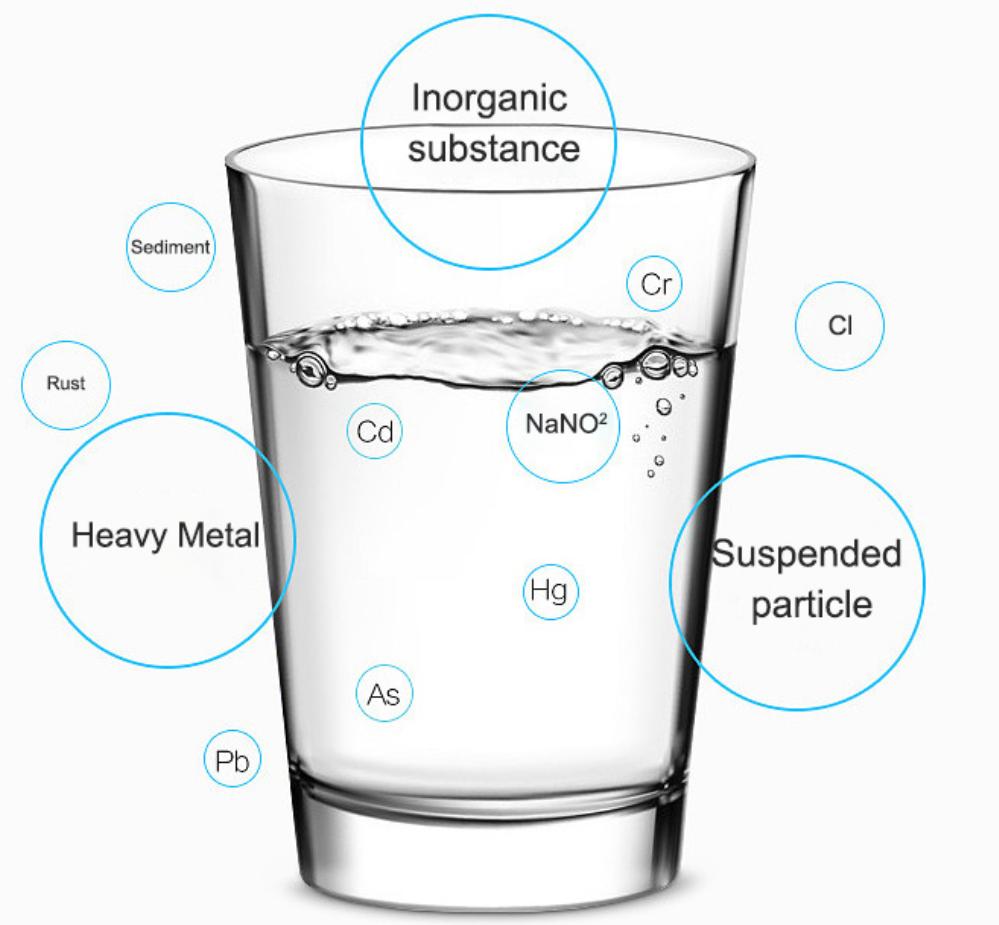
In summary, faucet mount water purifiers represent a fusion of convenience, efficiency, and sustainability, making them an ideal choice for modern households. Their ability to adapt to various water quality needs and the ease of switching between filtered and unfiltered water only adds to their appeal. Whether it’s for drinking, cooking, or any other household use, these purifiers ensure that clean water is always at your fingertips.
Preparation for Installation
Before diving into the installation of your faucet mount water purifier, it’s essential to gear up with the right tools and approach the process with safety in mind. To start, gather the necessary tools: typically, this includes adjustable wrenches, pliers, and perhaps some Teflon tape to ensure a snug, leak-proof connection. It’s also wise to have a towel or a small container handy to catch any water that may drip when you detach the faucet’s aerator.
Speaking of safety, it’s paramount. Always ensure that the water supply is turned off before beginning the installation. This simple step can prevent unexpected water sprays and potential messes. Additionally, handle the tools and purifier components with care to avoid damage to your sink fixtures or the purifier itself.
Another crucial aspect is to familiarize yourself with the specific purifier model you have chosen. Different models may come with slightly varied installation requirements or additional components. Taking a few moments to read through the manufacturer’s instructions can save time and ensure a smooth installation process.
Remember, preparation is key. By having the right tools and a clear understanding of the safety measures and specific instructions for your water purifier model, you’re setting the stage for a successful installation. With everything in place, you’re now ready to embark on the journey of providing your household with cleaner, healthier water.
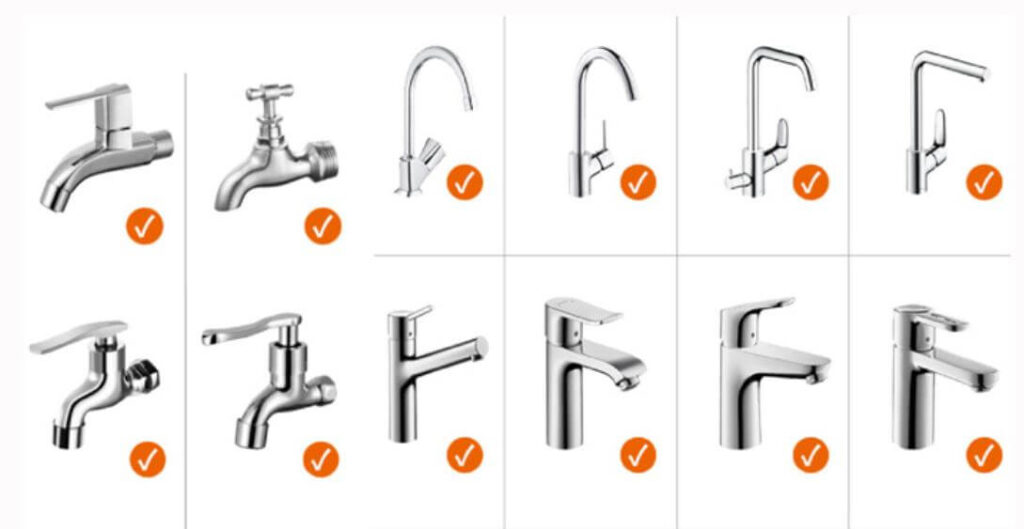
Selecting the ideal faucet mount water purifier requires thoughtful consideration of several factors to ensure it meets your specific water quality needs and household usage. First and foremost, analyze the quality of your tap water. Understanding the main contaminants in your water supply, be it chlorine, heavy metals, or sediment, is crucial in choosing a purifier that effectively targets these issues. You might want to consider getting a water quality report from your local water provider or using a home testing kit for this purpose.
Next, think about your daily water usage. Different purifiers come with varying capacities and flow rates, which should align with your household’s water consumption patterns. A larger family or higher water usage might necessitate a purifier with a higher capacity or one that doesn’t reduce the flow rate significantly.
Another key factor is the physical compatibility of the purifier with your existing faucet. Most purifiers are designed to fit standard faucets, but if you have a non-standard faucet, you’ll need to ensure the purifier you choose can be adapted to fit.
In terms of model selection, there are several top-rated purifiers to consider. For example, the PUR Plus Faucet Filtration System, known for its ability to remove over 70 contaminants, is a popular choice due to its effectiveness and NSF and WQA certifications. Other notable models include the Culligan FM-25, lauded for its easy installation and compact size, and the versatile PUR PFM400H, which adds minerals to the water and has an electronic filter change indicator.
Finally, consider the aesthetic and design aspects. You’ll want a purifier that not only performs well but also complements your kitchen’s style. With these factors in mind, you can confidently choose a faucet mount water purifier that’s right for your home, balancing performance, convenience, and style.
Step-by-Step Installation Guide
Now that you have chosen the right faucet mount water purifier, it’s time to embark on the installation process. Don’t worry, it’s simpler than you might think, and I’m here to guide you through each step.
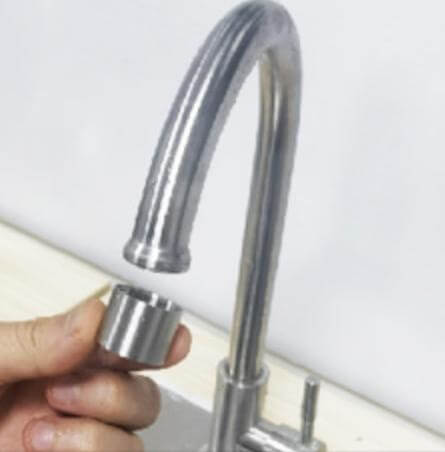
- Removing the Existing Aerator: Begin by unscrewing the aerator from the tip of your faucet. This is usually done by hand, but if it’s tight, gently use pliers. Keep the aerator and any washers in a safe place in case you need to reinstall them in the future.
- Attaching the Adapter: If the threads on your faucet don’t match the purifier, use one of the adapters provided with your purifier kit. Select the one that fits your faucet and screw it in place.
- Installing the Purifier: Now, take your faucet mount water purifier and align it with the adapter or faucet threads. Carefully screw it in place by hand to avoid cross-threading. Ensure it’s snug but don’t over-tighten, which could damage the threads.
- Checking for Leaks: Once installed, turn on the water to check for leaks. If there are any drips, try tightening the connections a bit more or use Teflon tape to secure the seal.
- Activating the Filter: Depending on your model, you might need to let the water run for a few minutes to activate the filter. This is often the case with activated carbon filters that need to be flushed to remove any carbon dust.
- Final Testing: After installation and flushing, fill a glass with water from your new purifier. Check the taste, and if everything seems fine, you’re all set!
If you encounter any issues, such as reduced water flow or persistent leaks, consult the troubleshooting section of your purifier’s manual. Common issues can often be resolved with simple adjustments, such as reseating the filter or checking the adapter fittings.
Congratulations! You’ve successfully installed your faucet mount water purifier, taking a significant step towards safer and better-tasting drinking water.
Maintenance and Care
To ensure your faucet mount water purifier continues to function at its best, regular maintenance and care are key. Here’s how to keep your water purifier in top shape:
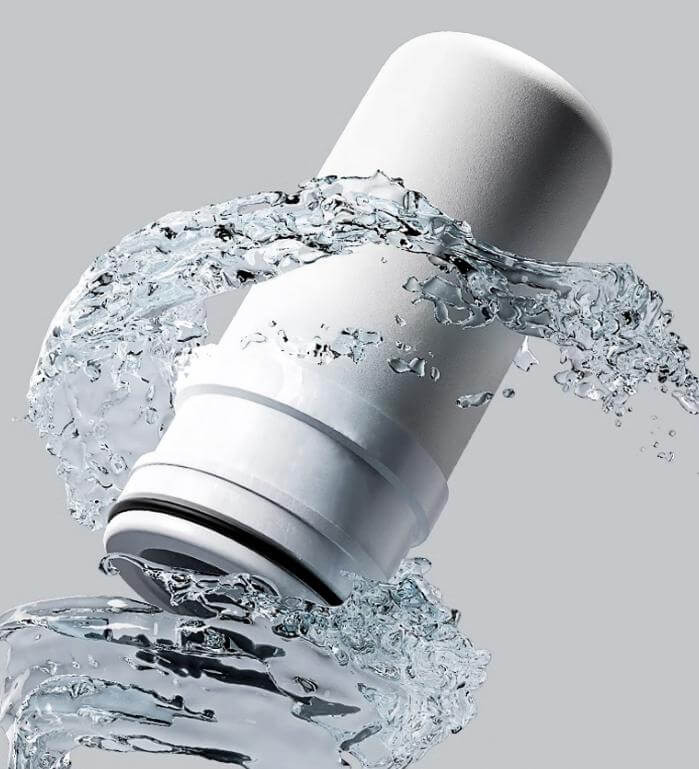
- Cleaning the Purifier: Regularly clean the exterior of your purifier to prevent any buildup of dust or grime. A soft, damp cloth is usually sufficient for this task. Avoid using harsh chemicals or abrasive materials that could damage the purifier’s surface.
- Replacing the Filter Cartridge: One of the most crucial aspects of maintenance is timely filter replacement. The lifespan of a filter cartridge varies, generally ranging from two to six months, depending on the model and your water usage. Many modern purifiers have a built-in indicator system – either a visual gauge or a timer – that alerts you when it’s time for a replacement. Adhering to these replacement schedules is vital as overused filters lose their effectiveness and may not adequately purify your water.
- Regular Check-ups: Periodically check your purifier for any signs of wear or damage, such as cracks in the housing or leaks. If you notice any issues, address them promptly to avoid any deterioration in the purifier’s performance.
- Avoiding Hot Water: Most faucet mount water purifiers are designed for cold water use only. Running hot water through the purifier can damage the filter media and reduce its lifespan. Ensure that you switch to unfiltered water when using hot water.
- Winter Precautions: If you live in an area with freezing temperatures, it’s important to protect your purifier from the cold. Detach the purifier and store it indoors during extreme cold spells to prevent any potential freeze damage.
By following these maintenance and care tips, your faucet mount water purifier will continue to provide clean, safe drinking water for you and your family. Regular upkeep not only extends the life of your purifier but also ensures that the water quality remains consistently high.
Advanced Tips and Hacks
To elevate your experience with your faucet mount water purifier and ensure it operates at peak efficiency, here are some advanced tips and hacks:
- Optimizing Filtration Efficiency: If you find the water flow is slower than you prefer, check the filter. Sometimes, sediment buildup can reduce flow rate. Regularly flushing the filter, as per the manufacturer’s instructions, can help maintain optimal water flow.
- DIY Modifications: For those who love a good DIY project, consider customizing your faucet mount purifier to better suit your needs. For instance, adding an extra pre-filter layer can help in areas with particularly high sediment levels, prolonging the life of your main filter.
- Experiment with Filter Types: If your water purifier model allows, experiment with different types of filter cartridges to find the one that best suits your water quality. Some cartridges may be more effective at removing specific contaminants than others.
- Regular Performance Checks: Periodically test your water quality using a home test kit. This will help you gauge the effectiveness of your purifier and determine if it’s time to replace the filter, even before the indicator light or gauge suggests it.
- Custom Water Flow: Some purifiers allow you to adjust the flow rate. Experimenting with these settings can help you find the perfect balance between filtration efficiency and water pressure that suits your daily needs.
- Temperature Adjustments: While most purifiers are designed for cold water, understanding how your water temperature affects the filtration process can be beneficial. For example, using water that is too cold can slow down the flow rate, so finding a middle ground can optimize the filter’s performance.
By applying these advanced tips and hacks, you can tailor your faucet mount water purifier to work more effectively, ensuring you always have access to clean, purified water.
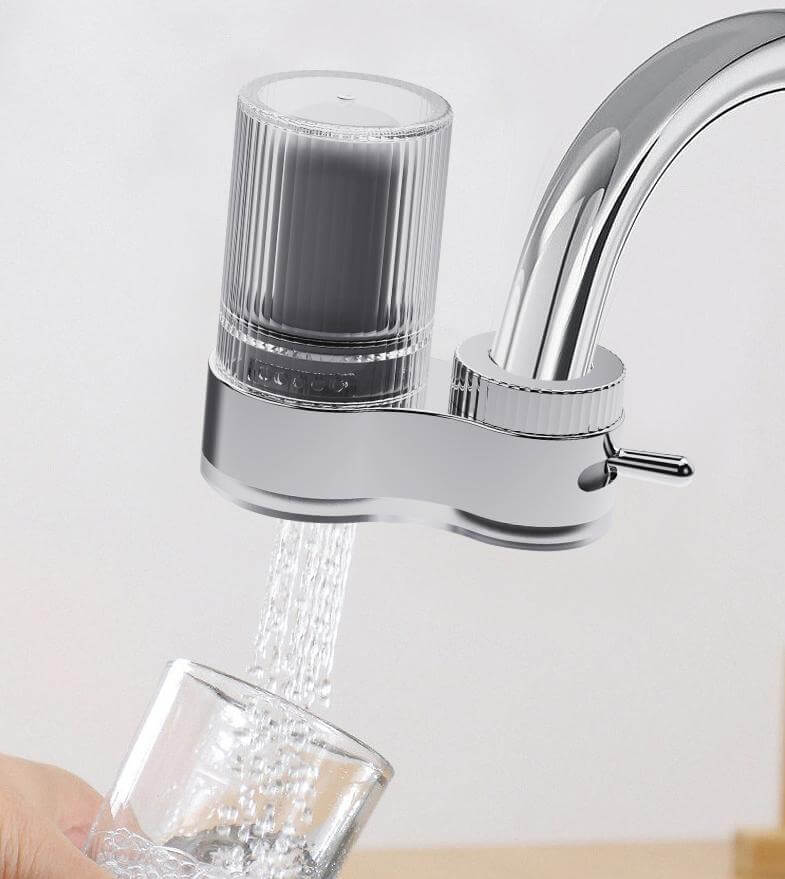
Common FAQs
In this section, we’ll address some of the most common questions and concerns regarding faucet mount water purifiers:
- How often should I replace the filter? The frequency of filter replacement varies depending on your model and water usage. Generally, it ranges from two to six months. Always follow the manufacturer’s guidelines or the indicator on your purifier.
- Can I filter hot water through the purifier? Most faucet mount water purifiers are designed for cold water filtration only. Using hot water can damage the filter and reduce its lifespan.
- Will the purifier fit my faucet? Faucet mount purifiers are designed to fit most standard faucets. However, if your faucet is non-standard, check if the purifier comes with different adapters or connectors for compatibility.
- Does the water purifier reduce water flow? While some reduction in flow rate is common, it should not be significant. If you experience a drastic reduction, check if the filter needs replacing or if there’s a blockage.
- Is it easy to switch between filtered and unfiltered water? Yes, most models come with a simple switch or diverter valve, allowing you to easily choose between filtered and unfiltered water.
- Can a water purifier remove all contaminants? Faucet mount water purifiers are effective at reducing many common contaminants like chlorine, heavy metals, and sediment. However, they may not remove all types of contaminants, so it’s important to choose a filter based on the specific contaminants in your water.
- Are faucet water purifiers expensive to maintain? Compared to buying bottled water, faucet mount purifiers are a cost-effective solution. The main expense is the replacement filters, which are generally affordable.
- Do I need professional help to install the purifier? Most faucet mount water purifiers are designed for easy DIY installation and do not require professional help.
Addressing these FAQs can help users feel more confident about their decision to use a faucet mount water purifier and ensure they are well-informed about its maintenance and functionality.
Conclusion
_05-542x1024.jpg)
As we wrap up “The Ultimate Guide to Installing Your Faucet Mount Water Purifier,” let’s revisit the key points to ensure you’re well-equipped for this journey towards purer water. We’ve explored the pivotal role of faucet mount water purifiers in providing clean, safe drinking water, delved into the various types, and outlined their numerous benefits. We covered the essentials of preparation, guiding you through the tools and safety considerations necessary for installation.
Choosing the right purifier involves understanding your specific water quality needs and daily usage, coupled with a knowledge of the top models available. The step-by-step guide aimed to simplify the installation process, making it accessible even for those who aren’t DIY enthusiasts. Maintenance and care were emphasized to ensure your purifier remains effective over time, and we shared some advanced tips and hacks for those looking to get the most out of their device.
Common FAQs addressed typical concerns, offering clarity and additional knowledge. Remember, the journey to cleaner water is both a commitment and an investment in your health and well-being.
I encourage you to engage with this content, share your experiences, and spread the word about the benefits of faucet mount water purifiers. Clean water is a fundamental need, and by sharing this guide, you’re helping others make informed decisions about their water quality.
Your journey towards cleaner, safer water starts here. Embrace it with confidence, knowing you have the tools and knowledge to make a significant difference in your daily water consumption.
